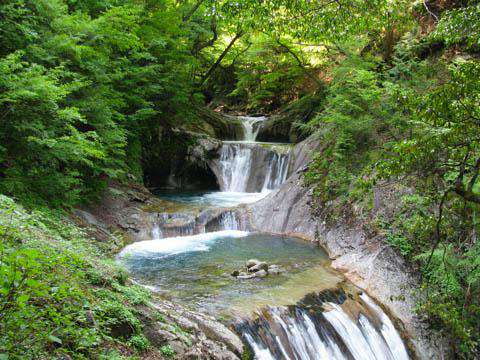Traveling in Chichibu-Tama-Kai
 Chichibu-Tama-Kai National Park, Japan (©MOEJ)
Chichibu-Tama-Kai National Park, Japan (©MOEJ)
Located at the intersection of the Saitama, Yamanashi, Nagano, and Tokyo Prefectures, Chichibu-Tama-Kai National Park is a national park in Japan webbed with hiking trails and many ancient shrines. Mount Mitake, Mount Mitsumine, and Mount Mito are just three of the eight peaks that tower above the park at over 2000 meters, while rivers sources flowing below include the Arakawa River, Shinano River, Tama River, and Fuefuki River (Fuji River).
Neighborhoods & Around
Little hubs of civilization can be found around most of the park's major attractions. Many of the towns throughout the region are more like rural villages with some residents, information, guest houses, and a few places to eat. The park has three Visitors Centers: Yamano Furusato Visitor Center, Okutama Visitor Center, and Mitake Visitor Center. The third is perhaps one of the better known ones since it is located near one of the more frequented attractions of Mount Mitake. At the peak of this mount there is a Shinto shrine called Musashi-Mitake Shrine which was established during the reign of Emperor Sujin in 90 B.C. The Visitors center here offers guides and maps, public restrooms, and a small nature center, and is located within a village that also features a cable car station that can take visitors up to the shrine.
Related:
Looking for a hostel in Japan? In search of a party in Tokyo? Traveling alone to Osaka or Tokyo?

 Budget Your Trip is all about finding out how much everything costs so that you can travel cheaper and longer. Created by avid travelers Laurie and Bryan, our goal is to help you plan your next trip on the right budget. With average daily travel costs that are calculated from the budgets of real travelers, plus an analysis of hotel and tour prices, you can find out how much money you need to plan your next adventure. We also have plenty of travel advice, accommodation reviews, and activity suggestions.
Budget Your Trip is all about finding out how much everything costs so that you can travel cheaper and longer. Created by avid travelers Laurie and Bryan, our goal is to help you plan your next trip on the right budget. With average daily travel costs that are calculated from the budgets of real travelers, plus an analysis of hotel and tour prices, you can find out how much money you need to plan your next adventure. We also have plenty of travel advice, accommodation reviews, and activity suggestions.